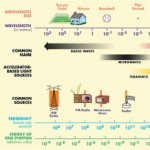- This topic has 9 replies, 4 voices, and was last updated 10 years, 3 months ago by
 Dr. Dhiman Kakati.
Dr. Dhiman Kakati.
-
AuthorPosts
-
-
September 1, 2015 at 12:23 am #24256
 Dr. Dhiman KakatiParticipant
Dr. Dhiman KakatiParticipantPlease go through the attached snapshot, unable to understand how to make the connections,
Red line for optical and blue line for eletrical domain.With regards
-
September 1, 2015 at 1:08 am #24258
 alistuParticipant
alistuParticipantHi Dhiman,
With regard to the system snapshot you have attached in the other topics, I think the image is related to coherent optical detection, so OC stands for optical coupler in here. I have attached an image which depicts how you can make the connections for coherent detection. Use one for I signal and one for Q signal.
Regards.
-
September 1, 2015 at 1:20 am #24262
 Dr. Dhiman KakatiParticipant
Dr. Dhiman KakatiParticipantThanks alistu, Hope it will definitely help me. Hope to get more help in future.
-
September 1, 2015 at 1:43 am #24266
 Ashu vermaParticipant
Ashu vermaParticipantAgree with Alisthu,you can check the tutorials and you can easily get help.Check the link,optiwave examples like DPSK and DQPSK used this type of detection
-
September 1, 2015 at 2:15 am #24269
 Dr. Dhiman KakatiParticipant
Dr. Dhiman KakatiParticipantThanks alistu and sam sung.
-
September 1, 2015 at 7:26 am #24284
 alistuParticipant
alistuParticipantYou’re welcome Dhiman. I have used pin photodetectors in my snapshot. You can act according to the paper whose results you are trying to reproduce. You can also use the “optical Coherent QAM receiver’ component from Optisystem library. In that case, you will not need a CW laser and you get to choose the type of photodetector in the component properties.
-
-
September 1, 2015 at 2:18 am #24271
 Ashu vermaParticipant
Ashu vermaParticipantWelcome Dhiman,you have raised some good issues.Keep it up and help other members too.
-
September 1, 2015 at 10:06 am #24286
 MHD NAParticipant
MHD NAParticipantHi Dhiman Kakati; i think your attached snapshot doesn’t work in optisystem by the shown manner so you should follow the snapshot attached by alistu.
-
September 1, 2015 at 10:16 am #24287
 Dr. Dhiman KakatiParticipant
Dr. Dhiman KakatiParticipantThanks namera, I will try it.
-
-
AuthorPosts
- You must be logged in to reply to this topic.

